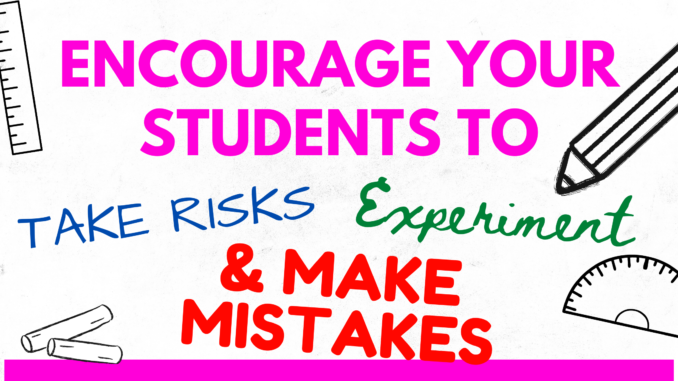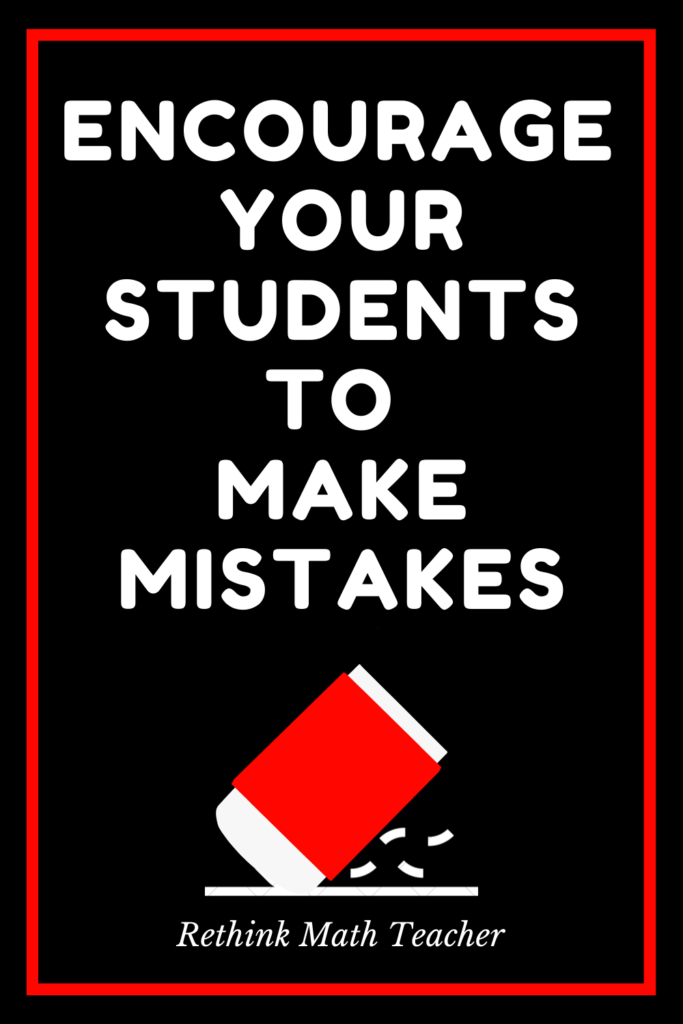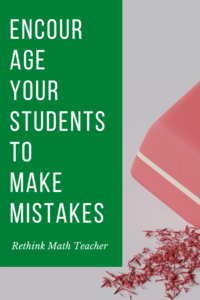
There are lots of benefits when students try new ways to solve a problem. Unfortunately, the way we currently structure our instructional design promotes memorization and discourages experimentation and risks.
Why do we want our students to make mistakes?
And how do we promote them to do so?
Experimentation Leads to Understanding
Think of some of the greatest discoveries that have come as a result of experimentation and challenging previously held ideas. Things like electricity, the light bulb, or ocean currents were discovered through a series of experiments.
But we don’t have to experiment only to learn something new. We can also experiment to gain an understanding of why something is.
The school I work at has a robotics course. In it, students must wire a motherboard to other devices. But why? What happens if they wire it wrong? Or if they don’t complete the circuit? Through this experimentation, students come to a greater understanding of electrical currents, mechanics, engineering, and so much more.
The same is true in math. If students learn a concept without understanding, they will make incorrect applications (this why students mix up integer rules or forget that they need a common denominator to add fractions – because they memorized a rule that they don’t understand).
So to get understanding, we have to allow experimentation
Failure Promotes Growth
When a weightlifter tries to build muscle, they increase the weight they are lifting and seek out failure. They push themselves to their limit, and then seek to exceed it.
The failure actually tears their muscles which promote growth.
Failure is a great teacher.
We all make mistakes as we learn. But those mistakes help us learn. They show us what didn’t work, and why it did not achieve the desired outcome.
When math students make mistakes, they can gain greater understanding over the process – why each step is necessary, why the order is important, and why one process works and another doesn’t.
Unfortunately, in most math classrooms, students are afraid to make mistakes.
In most classes, mistakes are bad. They cause you to lose points, so students don’t take risks or experiment.
Often, students don’t know that they’re making a mistake unless the teacher calls on them to answer out loud. Then their mistake is broadcast to all their peers, which can be embarrassing.
Instead, students should be able to know when they’ve made a mistake;
- immediately so that they can learn from it
- and privately, so everyone in the class is unaware.

Making Room for Experimentation and Failure
Students don’t take risks, try new methods, or are unafraid of failure often due to the consequences that they receive from making mistakes. Because of this fear, they try to memorize without understanding why the rules they’re memorizing making sense.
To encourage experimentation and failure, which will promote greater understanding, we must help students by removing the risks associated with making mistakes.
How do We Encourage Mistakes?
We must show students that it’s okay to make mistakes.
Unfortunately, most teachers tell their students that mistakes help you learn, but the classroom environment suggests otherwise.
In most classrooms, the teacher presents the instruction, shows how to do the work, and then assigns some practice problems. After modeling the practice problems and going over the correct answers, the students are released to work on independent practice problems.
These independent practice problems are normally graded for accuracy. However, students are likely still in the learning phase – doing a summative assessment is premature.
Furthermore, these problems are usually finished for homework, and then checked the next day in class. This means that student did not have the immediate feedback piece required to realize they were making mistakes, and learn from them.
For students to learn from their mistakes, immediate feedback is required
How can you learn from your mistakes if you don’t know that you’re making them?
Most math classes do not give students feedback after every question while they are still learning the skill. Usually, the feedback is only given on a few problems, and often not at all – or at least not until the next day.
If mistakes help us learn, students must know that they have made a mistake as soon as they have made it. So provide feedback to students after every question while they are still in the learning phase.
Should Mistakes be Penalized?
When students are still in the learning phase, it should not be be expected that they have mastered the skill. Instead, while they are still learning how to perform a mathematical practice, they should be encouraged to experiment, take risks, and learn from their mistakes.
To do this, immediate feedback must be given. Furthermore, students cannot fear losing points for making errors.
To be clear, there is a time when students should be expected to have mastered a concept, and then mistakes should be marked accordingly, but not when they are still learning a skill.
The obvious question then becomes…
How long does it take a student to learn a new skill?
There are numerous studies done on this, most fall in the range of 20-30 repetitions.
In other words. After you teach a student a new skill, the average student needs to practice that skill, correctly, with immediate feedback, between 20-30 times before they have mastered it.
Which means they should not loose points for incorrect answers while they are still in this stage.
Also, keep in mind that this is average. Not all of your students are average; they will require more practice repetitions to master the math concept.

Conclusion
It takes most students 20-30 practice repetitions of a skill before they have mastered it. Those practice repetitions need to have instant feedback and the student should not fear loosing points for making mistakes.
- Do you provide students with immediate feedback on every question so that they know that they are making mistakes?
- Do you provide them an opportunity to learn from their mistakes while they are still in the learning process?
- Do Students in your class try to memorize rules instead of understanding them?
To reach all of your students, help them wrestle with their math concepts by removing the fear of making mistakes. Learn more great teaching strategies in my free, online professional development course.






